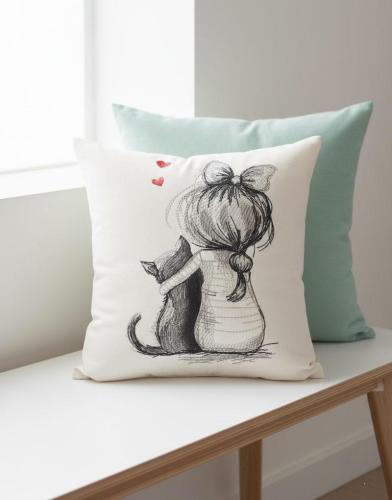All Activity
- Yesterday
-
Rose in hand free embroidery design
- 2 comments
- 3 reviews
-
Peti53 joined the community
-
barney7307 joined the community
-
Rose in hand free embroidery design
- 2 comments
- 3 reviews
-
-

- 1
-
-
maggie3803 joined the community
-
shehnaazsaket changed their profile photo
-
shehnaazsaket joined the community
-
🧢 Floating a Hat on a 4×4 Hoop: Real-World Lessons, Mistake
✨ Follow-Up: How to Hoop a Hat on a 4×4 Hoop (Beginner-Friendly, Real Experience!) 🧢🪡After my last hat embroidery post, I couldn’t add more photos — so here’s the full breakdown of how I hoop and embroider hats using a 4×4 hoop and the floating method. This comes straight from hands-on trial, errors, broken needles 😅, and actual success. 🧵 The Method: Floating a Hat on a 4×4 HoopInstead of forcing a structured cap into a hoop (which rarely ends well), I: Hoop only the stabilizer I hoop Sulky Sticky Tear-Away stabilizer by itself. Float the hat on top The hat is carefully positioned and pressed onto the sticky surface. Align. Check. Re-check. Placement matters every single time. Hats are unforgiving. Manually hold the brim flat I press down on the bill while stitching starts to keep everything flush. 💡 Expert Tips (From the Trenches) 🧠 Beginner Takeaways✨ “This post finally taught me what floating means!” ✨ “Didn’t know the stabilizer goes in the hoop alone — game changer!” ✨ “Also learned floating is essential for terry cloth!” If you’re new: you’re not behind — you’re learning the right way. 🧵 Hats vs Patches — Honest Comparison🧩 Patches Easier More forgiving Less stress 🧢 Direct-to-Hat Embroidery Looks much better More nerve-racking 😅 Totally worth it 📊 My stats so far: ✔️ 10 successful hats ❌ 2 throwaways (That’s a win in hat embroidery!) 🖥️ Machine & Software NotesMachine: Brother SE2000 Software: Embrilliance Not cheap 💸 Very intuitive (think Adobe Illustrator for embroidery) Excellent YouTube tutorials (a 5-video series helped a lot!) ✅ Final Thoughts🧢 Hats are harder than patches — no question. 🧵 Floating is the key skill that unlocks hat embroidery. 👀 Supervision + patience = success. 💥 Expect a few failures — that’s part of mastering it. If you’ve been nervous to try hats… this is your sign. Save this post, slow down, and go for it 💪✨ Have you tried floating yet — or are you about to? 👇😊
-
Vanillivi joined the community
-
Rose in hand free embroidery design
Thank you very much .You❤️ are so incredibly kind that you give us such nice and beautiful embroideries .
- 2 comments
- 3 reviews
-
-

- 1
-
-
Rose in hand free embroidery design
- 2 comments
- 3 reviews
-
-

- 1
-
- Last week
-
Rose in hand free embroidery design
Der Entwurf ist toll, nur habe ich sorge, daß es durch die Rose zu kitschig werden könnte. Vielen lieben Dank für die Inspiration 🙏🏻
- 2 comments
- 3 reviews
-
-

- 1
-
-
Embroidered Blankets for Children’s Rooms: Cozy & Timeless
Embroidered Blankets in a Child’s Room: Warmth, Story & Style 🧸✨An embroidered blanket in a nursery is more than a cozy layer. It’s a design accent, a keepsake, and often the first textile a child bonds with. When done right, embroidery elevates a simple blanket into a piece that tells a story—soft to touch, safe to use, and beautiful to look at 💛 Below is a systematic guide: from creation challenges and newborn safety to sizing, design choice, materials, and care—plus real-world tips from sellers and designers. Design inspiration example (as requested): 👉 Teddy bear with map near to minibus embroidery design 🧠 Are There Challenges in Making Embroidered Blankets?Yes—but they’re solvable with the right plan. Common challenges Keeping the blanket soft and flexible after stitching Preventing puckering on layered fabrics Ensuring baby-safe finishes (no scratchy backs) Choosing embroidery that remains visible without making the blanket stiff DESIGNER TIP: Digitize for softness, not maximum density. Open fills and gentle outlines keep the blanket drapey and cuddly. 🪡 Why Embroidery Is Better Than Prints on BlanketsPrints fade and crack. Embroidery lasts—and feels special. Why embroidery wins ✔ Wash-resistant and durable ✔ Tactile (babies love textures) ✔ Premium, handmade look ✔ Easy to personalize (names, dates) Embroidery turns a blanket into a memory piece, not just décor 🧵✨ 👶 How to Make an Embroidered Blanket for a NewbornNewborns need softness first. Best practice Choose baby-safe fabrics (pre-washed). Embroider before final assembly (on the top layer only). Use a soft backing to cover stitches on the reverse. Keep designs light and centered—no heavy blocks. CRITICAL NOTE: Never place dense embroidery where the baby’s face rests. Comfort and airflow come first. 🎨 Choosing a Stylish Design That Grows With the ChildThink beyond “baby-only.” The best designs age gracefully. Design directions that last Soft animals with gentle expressions 🧸 Storybook scenes (travel, clouds, stars) ✨ Minimal line art in calm palettes Neutral backgrounds with one playful accent Avoid Overly bright neon fills Tiny text that disappears after washes Very trendy motifs that date quickly SELLER INSIGHT: Parents prefer designs that still look good at age 3–5. “Grows-with-you” aesthetics sell better. 📍 Where to Place Embroidery on a BlanketPlacement affects both visibility and comfort. Best placements Upper center (visible in cribs and photos) One corner (classic, lightweight, elegant) Wide border accent (for larger blankets) Avoid Dead center for very dense designs (can stiffen the drape) 📏 Average Blanket & Embroidery SizesCommon blanket sizes Newborn: 70×90 cm (27×35") Baby: 90×120 cm (35×47") Toddler: 100×140 cm (39×55") Recommended embroidery sizes Newborn: 10–14 cm (4–5.5") Baby/Toddler: 14–22 cm (5.5–8.5") Rule of thumb: Big enough to read, light enough to cuddle. 🧵 What to Know Before StitchingPre-wash all fabrics (shrinkage control) Stabilize only the top layer Test stitch on scraps Use colorfast threads Finish the back with soft fusible cover PRACTICAL TIP: If the embroidery feels stiff after stitching, density is too high. Comfort beats sharpness on baby blankets. 🧶 Materials Comparison (Pros & Cons)Material Pros Cons Cotton muslin Breathable, baby-safe Needs gentle stabilization Cotton jersey Soft, stretchy Can distort without cut-away Fleece Warm, cozy Can “swallow” fine details Minky Ultra-soft, luxurious Slippery; requires topper Quilted cotton Structured, premium Heavier feel Best stabilizers Light cut-away (top layer only) Water-soluble topper for nap fabrics Soft fusible backing for the reverse 🧼 Care & WashingGentle cycle, cold water Mild detergent Air dry or low heat Avoid fabric softeners (can dull threads) CARE NOTE: A well-embroidered blanket should look the same after 20+ washes. Test once before gifting or selling. 🔍 What We See Online (Market Signals)Animals + story themes dominate sales Neutral bases with one accent color convert best Personalization increases value Sets (blanket + pillow/basket) photograph beautifully 📸 Typical price range: $45–$120, higher with personalization. ❤️ Final ThoughtsAn embroidered blanket brings warmth, story, and intention into a child’s room. With the right materials, placement, and a gentle design—like a teddy on a little journey—you create something parents keep long after the nursery years 🧸🌟
-
- baby blankets
- baby room textiles
- baby shower gift ideas
- children room accessories
-
Tagged with:
- baby blankets
- baby room textiles
- baby shower gift ideas
- children room accessories
- cozy nursery
- embroidered baby blanket
- embroidered blankets
- embroidery for newborns
- handmade baby gifts
- kids bedding decor
- kids room interior
- nursery decor
- nursery design ideas
- nursery embroidery
- personalized baby blanket
- soft textiles for kids
- teddy bear embroidery
- washable baby textiles
- handmade nursery items
-
Rose in hand free embroidery design
- 1,235 downloads
- Version any popular formats
Size 1: 4 x 7.05' Size 2: 4.22 x 7.44' Size 3: 4.44 x 7.83' Size 4: 4.67 x 8.23' Size 5: 4.89 x 8.62' Size 6: 5.34 x 9.41' Size 7: 5.78 x 10.22' Size 8: 6.23 x 10.92' Size 9: 6.68 x 11.77' 🌹 Rose in Hand – Free Embroidery Design✋ A Symbol of Tender Strength & Quiet EmotionThis Rose in Hand free embroidery design captures a powerful contrast: a delicate rose held firmly, yet gently, in a human hand. The sketch-style lines and subtle geometric guides give the design an artistic, almost architectural feel — as if emotion itself were carefully drawn and measured. Perfect for those who love minimalist art, line drawings, and meaningful embroidery, this design feels modern, soulful, and timeless all at once. 🧵 Why You’ll Love This Design✨ Expressive hand-drawn sketch style 🌸 Soft floral accent with emotional depth 📐 Artistic geometric background elements 🪡 Ideal for jackets, denim, tote bags, wall hoops, and statement pieces 💝 Looks stunning on light fabrics and fashion items This embroidery design works beautifully as a back-panel statement, a creative accent on clothing, or a thoughtful handmade gift. 💾 Free to Download & ShareThis design is free for the community — download it, stitch it, and make it your own. We’d love to see how you bring this rose to life with thread 💖 🌍 Download, stitch, and share your results with the community! 🧵🌹✨ Girl_embroidered_jacket.mp4- 2 comments
- 3 reviews
-
-

- 2
-
-
Rose in hand free embroidery design
Rose in hand free embroidery design Size 1: 4 x 7.05' Size 2: 4.22 x 7.44' Size 3: 4.44 x 7.83' Size 4: 4.67 x 8.23' Size 5: 4.89 x 8.62' Size 6: 5.34 x 9.41' Size 7: 5.78 x 10.22' Size 8: 6.23 x 10.92' Size 9: 6.68 x 11.77' 🌹 Rose in Hand – Free Embroidery Design✋ A Symbol of Tender Strength & Quiet EmotionThis Rose in Hand free embroidery design captures a powerful contrast: a delicate rose held firmly, yet gently, in a human hand. The sketch-style lines and subtle geometric guides give the design an artistic, almost architectural feel — as if emotion itself were carefully drawn and measured. Perfect for those who love minimalist art, line drawings, and meaningful embroidery, this design feels modern, soulful, and timeless all at once. 🧵 Why You’ll Love This Design✨ Expressive hand-drawn sketch style 🌸 Soft floral accent with emotional depth 📐 Artistic geometric background elements 🪡 Ideal for jackets, denim, tote bags, wall hoops, and statement pieces 💝 Looks stunning on light fabrics and fashion items This embroidery design works beautifully as a back-panel statement, a creative accent on clothing, or a thoughtful handmade gift. 💾 Free to Download & ShareThis design is free for the community — download it, stitch it, and make it your own. We’d love to see how you bring this rose to life with thread 💖 🌍 Download, stitch, and share your results with the community! 🧵🌹✨ Girl_embroidered_jacket.mp4 File Information Submitter diver361 Submitted 01/03/2026 Category Style View File
-
Cozy Order: Soft Storage Baskets for Children’s Interiors
Soft Storage Baskets in a Kids’ Room: Cozy Order with a Personal Touch 🧺✨A children’s room is a place where imagination lives — and where toys somehow appear everywhere. Soft storage baskets are not just a trend in nursery interiors; they are a smart, emotional, and child-friendly solution that helps keep order without killing the magic 🧸🌈 In this article, we’ll look at soft baskets as a systematic interior element: why they are needed, how embroidery elevates them, what challenges exist in production, and how to choose the right design to reflect a child’s personality. Design example to keep in mind: 👉 Kitten with baby rattle embroidery design 🧠 Do Soft Baskets Really Matter in a Kids’ Interior?Yes — and more than it may seem at first glance. Soft baskets help to: Organize toys, books, blankets, clothes 🧸📚 Teach children independent cleanup habits Keep the room visually calm and cozy Reduce the risk of injuries compared to hard plastic bins Unlike rigid storage, textile baskets feel warm, safe, and inviting — exactly what a child’s room should be. <div style="background:#f0f0f0;padding:14px;border-radius:8px;"> <strong>INTERIOR DESIGNER TIP:</strong><br> Soft baskets visually “blend” into the room, while hard boxes always dominate the space. That’s why textile storage works best for nurseries. </div> 🧺 Are There Difficulties in Creating Soft Baskets?Yes — but they are manageable if planned correctly. Main challenges: Keeping the basket’s shape Preventing embroidery distortion Choosing washable, child-safe materials The good news? Modern stabilizers, interlinings, and embroidery techniques solve most of these issues beautifully. 🪡 Why Embroidery Is the Best Decoration for Soft BasketsPrinted décor fades. Stickers peel. Embroidery lasts. Why embroidery wins: ✔ Durable and wash-resistant ✔ Tactile — kids love touching stitched designs ✔ Adds emotional value and personality ✔ Looks premium and handcrafted A cute embroidered character can turn a basket into a “room companion” — not just storage, but part of the child’s world 🐱💕 🎨 Choosing a Design That Reflects the Child’s PersonalityThe best designs are not random — they tell a story. Design ideas by personality: 🐻 Soft animals → calm, gentle kids 🚗 Vehicles → active, curious personalities 🌸 Flowers & fairies → dreamy, artistic children 🦊 Funny characters → playful, imaginative minds 💡 Neutral colors with one bright accent work best — they grow with the child and don’t feel “too babyish” later. <div style="background:#f0f0f0;padding:14px;border-radius:8px;"> <strong>SELLER INSIGHT:</strong><br> Parents are far more likely to buy a basket when the design “looks like their child.” </div> 📍 Best Placement for Embroidery on a BasketFor maximum visibility and durability: Front center panel — always visible Slightly above the middle — avoids distortion when filled Away from side seams and handle attachments Avoid placing embroidery too low — the basket bottom bulges under toy weight. 📏 Average Basket & Embroidery SizesBasket Height Diameter Recommended Embroidery Size 30–35 cm 25–30 cm 14–18 cm 40–45 cm 30–35 cm 18–25 cm 50–55 cm 35–40 cm 22–30 cm ✨ Bigger baskets benefit from larger, expressive designs — small embroidery can feel “lost.” 🧵 Materials Comparison: Pros & ConsMaterial Pros Cons Cotton canvas Strong, durable, easy to embroider Needs interfacing for shape Cotton twill Softer feel, child-friendly Can wrinkle Felt Naturally holds shape May pill over time Linen blends Stylish, natural look Requires strong stabilizer Upholstery fabric Excellent structure Harder to hoop 🔧 Best internal support options: Foam stabilizer (3–5 mm) Thick interfacing (Decovil, Pellon) Quilted batting for softer walls 🧼 Care & Washing: What Parents Need to KnowWell-made embroidered baskets can be washed — if designed correctly. Best practices: Use colorfast threads Pre-wash fabrics before embroidery Gentle cycle, cold water Air dry or low heat <div style="background:#f0f0f0;padding:14px;border-radius:8px;"> <strong>PRACTICAL TIP:</strong><br> Removable bottom inserts make washing much easier — parents appreciate this detail! </div> 🔍 What We See Online: Market TrendsFrom Etsy and nursery décor brands: Animal embroidery dominates Soft neutral baskets sell best Personalized names increase price and conversion Sets (basket + pillow + towel) are very popular 🎁 💰 Typical price range: $40–$100, depending on size and personalization. ❤️ Final Thoughts: More Than StorageA soft embroidered basket is: 🧺 Organization 🎨 Decoration 🧵 Handmade warmth 💕 Emotional connection It helps children feel proud of their space — and makes tidying up a little happier every day. With thoughtful materials, proper structure, and a sweet embroidered design like Kitten with baby rattle, you create not just an interior item — but a memory 🌟
-
Embroidered Hoodie Gift for Him: Strength, Style & Meaning
Embroidered Hoodie for the Man You Love: A Gift That Speaks Without Words 🖤🧵Some gifts are worn once. Others become part of who he is. An embroidered hoodie made especially for the man you love is not just clothing — it’s identity, strength, and emotion stitched together. This guide breaks the process down as a systematic study: from design psychology to materials, sizing, placement, and real production challenges — with practical advice from sellers and designers along the way. Design inspiration example (requested): 👉 Bears American Football embroidery design 📍 Where to Place Embroidery So It Looks Strong & VisiblePlacement defines perception. For men’s hoodies, embroidery should look confident, not decorative. Best placements: Center chest – powerful, dominant, immediately visible Left chest – classic, masculine, understated confidence Upper back – bold statement, great for logos and symbols Sleeve (outer) – secondary detail, numbers, symbols, years Avoid: Belly area (distorts when sitting) Near kangaroo pocket seams (warping risk) <div style="background:#f0f0f0;padding:14px;border-radius:8px;"> <strong>DESIGNER TIP:</strong><br> For a “brutal” masculine look, place the design slightly higher on the chest than usual — it visually broadens the shoulders. </div> 🧠 Choosing a Brutal, Stylish Design That Matches His CharacterA great men’s embroidery design reflects who he is, not trends. Design themes that work best: Sports symbols 🏈 (strength, loyalty, discipline) Animals (bears, wolves, bulls) 🐻🐺 Minimalist emblems & crests Monochrome or 2–3 color palettes Sharp lines, strong contrast Avoid: ❌ Cute illustrations ❌ Thin cursive fonts ❌ Overloaded color gradients <div style="background:#f0f0f0;padding:14px;border-radius:8px;"> <strong>SELLER INSIGHT:</strong><br> Men prefer designs that look good from 3–5 meters away. If it’s readable at a distance — it sells. </div> 📏 Average Hoodie & Embroidery SizesHoodie Size Ideal Embroidery Width Visual Effect S–M 18–22 cm (7–8.5”) Clean, athletic L–XL 22–27 cm (8.5–10.5”) Strong presence XXL+ 26–30 cm (10–12”) Bold, dominant Left-chest designs: 8–11 cm (3–4.5”) 💡 Rule: Better slightly bigger than “safe-small” — men associate size with confidence. 🧥 What to Know Before Buying a Hoodie for EmbroideryLook for: ✔ Medium–heavy weight (280–350 gsm) ✔ Cotton or cotton-blend fleece ✔ Smooth outer surface ✔ Minimal factory branding ✔ Stable seams Avoid: ✘ Ultra-stretch athletic hoodies ✘ Thin fast-fashion fleece ✘ Slippery polyester faces ⚙️ Real Challenges When Embroidering Men’s Hoodies1️⃣ Stretch & DistortionKnit fabric moves under the needle. Solution: Cut-away stabilizer + proper hoop tension. 2️⃣ Fleece “Eating” DetailsThick nap hides fine lines. Solution: Water-soluble topper + slightly wider satin stitches. 3️⃣ Seams & PocketsThey destroy geometry. Solution: Mark placement carefully; float if needed. <div style="background:#f0f0f0;padding:14px;border-radius:8px;"> <strong>PRO NOTE:</strong><br> Always test-stitch the exact hoodie brand. Two hoodies with the same GSM can behave very differently. </div> 🧵 Materials Comparison: What Works BestMaterial Pros Cons Cotton fleece Breathable, classic, masculine Shrinks if not pre-washed Cotton-poly blend Durable, colorfast Slight shine under light French terry Clean surface, modern look Less warmth Heavy fleece Premium feel, winter-ready Needs topper Polyester Strong, no shrink Less “natural” feel Best stabilizer: Cut-away Best needle: 75/11 or 80/12 Best thread: Polyester (strength & longevity) 🔍 Market Insight: What Sells & WhyAcross Etsy, Shopify, and brand merch stores: Sports-themed hoodies dominate men’s gifts Neutral hoodie colors (black, grey, white) sell best Personalized details increase value dramatically 💰 Typical price range: $55–$120 Custom + emotional = higher perceived value. ❤️ Why This Gift MattersAn embroidered hoodie for your man is: 🔥 Practical 🛡️ Strong 🎁 Personal 🧵 Made with intention Every stitch says: “I see who you are.” And that’s something no store-bought gift can replace.
-
Change default hoop size
Thank you!
-
Embroidered Toy Storage Baskets for Kids’ Rooms 🧺✨
Embroidered Soft Toy Baskets for Kids: Cute Storage That Organizes Joy 🧸✨In every nursery, toys seem to multiply overnight. Soft storage baskets are the perfect way to keep the room tidy — while making it stay playful and bright! And embroidery takes them from just useful to magically personal 🎀💛 Today we’ll explore how to design and create a reinforced soft toy basket with embroidery that: ✔ looks adorable ✔ stands upright ✔ stays safe for kids ✔ keeps toys out of sight (and off the floor!) Example design idea: 👉 Kitten with baby rattle embroidery design 📍 Best Placement for Embroidery on a Toy BasketA toy basket often stands in the center of the room, so visibility matters — especially when the design is big and cute! Best placement options: Placement Why It's Ideal Front center Always visible from any angle in the room Slightly above mid-height Prevents distortion when the bottom bulges with toys Avoid seams or handle connection areas Keeps design flat and crisp DESIGNER TIP: Large embroidery looks premium! Don’t be shy with sizing — kids' décor thrives on bold, expressive artwork 🐱💖 📏 Typical Basket & Embroidery SizesSoft toy baskets come in various heights — medium and large are most popular: Basket Height Diameter Logo Size Notes 30–35 cm (12–14”) 25–30 cm 15–20 cm Great for small nurseries 40–45 cm (16–18”) 30–35 cm 20–25 cm Most common size 50–55 cm (20–22”) 35–40 cm 25–30 cm Max visibility for bigger rooms 💡 For toddlers: choose round edges, soft materials, and no hard inserts inside the walls. 🧵 Technical Challenges in Embroidering a Toy BasketSoft baskets combine thickness + flexibility — a tricky duo in embroidery. Top challenges: ❌ Stretch / distortionBaskets are often sewn from canvas or cotton that shifts during stitching. Solution: Use temporary adhesive spray + solid cut-away stabilizer. ❌ Bulky seamsHandles and vertical seams can cause needle breaks. Solution: Place design away from seams and hoop only the smoothest panel. ❌ Soft fabric collapsingLarge embroidery adds weight that may bend the wall. Solution: Add foam interfacing after embroidery to keep shape. DESIGNER PRO TIP: Stitch designs with <em>medium</em> density — too dense = stiff walls that collapse inward 🧵➡️📦 🧺 Material Options — Table of Pros & ConsMaterial Pros Cons Canvas Strong, durable, great stitch support Can wrinkle when hooped Cotton twill Softer, child-friendly texture Needs stabilizer to avoid distortion Felt Thick & self-supporting Can pill over time Linen blend Premium look, trendy for décor More stretch → careful stabilizing Soft upholstery fabric Holds shape well May be tough to hoop Best internal support: ✔ Foam stabilizer (3–5 mm) ✔ Thick interfacing (Pellon, Decovil) ✔ Quilted batting for extra softness 🛍️ What to Know Before Buying a Blank BasketLook for: ✔ Basket with removable bottom insert ✔ Neutral colors — embroidery brings the fun ✔ Smooth, embroidery-friendly outer surface ✔ Reinforced handles that won’t distort walls Avoid: ✘ Deep folds or pleats ✘ Woven jute — very rough + breaks thread SELLER TIP: Offer "name personalization" under the design — parents LOVE custom items and pay extra for them 💸✨ 🔍 Market Insight: What Sells Best?Research from Etsy / Pinterest baby décor trends shows: Cute animals holding toys are top sellers 🧸💞 Pink and neutral palettes dominate nursery décor Larger, visible designs outperform small patches Sets (basket + towel + pillow) = better photos → more sales! 📸 Typical retail price: $35–$95 per basket depending on size and personalization. 🎯 Final Thoughts: A Basket That Sparks JoyA soft embroidered toy basket doesn’t just store toys… It tells a story. It grows with the child. It turns the daily “cleanup mission” into a fun routine 🎉 And the basket itself becomes a sweet character in the room 🐱💕 With the right stabilizing, materials, and a playful design like Kitten with baby rattle embroidery, you create décor that’s both charming and purposeful 🌟
-
Change default hoop size
In PE-Design 11 you don’t change the hoop size “globally” in a preferences menu the way you might in other software. Instead, the hoop size (design page size) is something you select per design/layout — and you can save that design if you want it to open again with the same hoop size. 📌 How to Set / Change the Hoop (Design Page) SizeOpen PE-Design 11 and either start a new design or open an existing one. Go to the Layout & Editing window (the main editing screen). Look for the Design Page settings — usually a toolbar or menu where you see current hoop size displayed. Click the hoop dropdown or the “Hoop Size” / “Design Page Size” option. Select the hoop you want from the list of available sizes. This adjusts the work area so your design fits the selected embroidery hoop. When you save your design, PE-Design will remember the hoop size for that file. If you want to reuse the same hoop by default for new designs, you can save a blank design with that hoop size and open it as your starting template.
-
Change default hoop size
How can I change the default hoop size in PE-Design 11?
-
Peggyp started following Change default hoop size
-
Cat and Girl friendship free embroidery design
-
Carrying Stories in Thread: Embroidery on Cotton Tote Bags
👜✨ Embroidery on Cotton Tote Bags: A Complete Research-Style GuideCotton tote bags have become icons of everyday style — eco-friendly, reusable, and perfect canvases for embroidery. From book lovers to fashion brands, embroidered cotton bags combine function, emotion, and craftsmanship. Let’s explore the process systematically, from fabric to final stitch 🧵 🔬 1. Why Cotton Tote Bags Are Ideal for EmbroideryCotton is one of the most embroidery-friendly materials because it offers: ✔️ Natural fiber with good stitch hold ✔️ Stable surface (especially canvas & twill) ✔️ Easy hooping ✔️ Long-term durability 💡 Canvas cotton (8–12 oz) is the gold standard for embroidered tote bags. 🧵 2. Step-by-Step Tote Bag Manufacturing Process📐 Step 1: Choosing the BagFlat tote or gusseted tote Long or short handles Pre-washed vs raw cotton 🪡 Step 2: Preparing for EmbroideryPress the bag (wrinkles = distortion) Decide embroidery placement (center / upper third) 🧷 Step 3: Hooping & StabilizingUse magnetic or flat hoop when possible Secure handles away from needle path 🧶 Step 4: EmbroideryMedium density designs work best Avoid extreme stitch counts for thin cotton 🧼 Step 5: FinishingRemove stabilizer Steam lightly Final quality check 📏 3. Most Popular Tote Bag Sizes (Industry Standard)Use Case Bag Size (inches) Daily shopping 15″ × 16″ Books & study 14″ × 18″ Fashion tote 13″ × 15″ Promo / events 12″ × 14″ 🎯 Optimal embroidery size: 👉 4″ × 4″ to 6″ × 8″ 🧪 4. Choosing the Right Stabilizer (Critical!)✔️ Tear-Away (Most Popular)Medium weight Easy removal Perfect for flat cotton ✔️ Cut-Away (For Dense Designs)For high stitch count Keeps shape long-term ❌ Avoid:Wash-away (too weak) Heavy cut-away (bag loses flexibility) 🎨 5. Design Considerations for Cotton BagsThe best designs for totes are: Line art Sketch-style illustrations Nature & animal motifs Minimalist characters 🦊 A perfect example is the Fox with glasses embroidery design It combines: Clean outlines Moderate stitch density High visual charm 😍 ⚠️ 6. Common Mistakes (and How to Avoid Them)❌ Too dense designs → stiff bag ❌ Wrong stabilizer → puckering ❌ Embroidering too low → hidden by folds ✅ Always test on scrap cotton ✅ Keep embroidery above center ✅ Use sharp needle (75/11 or 80/12) 🌱 7. Why Embroidered Cotton Bags Sell So Well♻️ Eco-friendly appeal 🎁 Perfect gift item 👜 Fashion + function ❤️ Emotional connection through illustration ✨ Embroidery turns a simple cotton bag into a story you can carry. 🧵 Final ThoughtsEmbroidery on cotton tote bags is not just a technique — it’s a blend of engineering, design, and emotion. When done right: The bag stays soft The design stays crisp The customer stays in love 💛 If you’re designing, selling, or stitching — this is one of the strongest products in modern embroidery. Happy stitching! 🪡👜✨
-
From Logo to Lifestyle: Embroidered Hoodie Design Guide
Stylized Logo Hoodie Embroidery: Wear Your Work, Your Passion, Your Brand 🚜✨A hoodie says a lot about a person — but a hoodie with a stylized logo embroidery says even more. It’s a badge of identity: farmers love their tractors, builders love their tools, and fans love their brands. Stylized logos take familiar icons (like the legendary John Deere deer) and give them a creative edge — more artistic, more modern, more YOU 💪🎨 Here’s how to make embroidered hoodies with stylized logos that look bold, feel comfortable, and last season after season. Example design 👉 John Deer modern logo embroidery design 📍 Where Should You Place a Stylized Logo?Visibility is everything when the design has strong branding energy. Most popular placements: Placement Why It Works Center chest Maximum attention, great for larger logos Left chest Subtle but professional look Upper back Adds strong presence for events/teams Sleeve Perfect for additional graphics or text Avoid the belly area — the fabric stretches and folds when sitting or working. DESIGNER TIP: Always position the logo above the pocket seam line. Kangaroo pockets can warp stitching and ruin clean geometry. 📏 How Big Should the Logo Be?Stylized logos rely on bold lines and clear shapes — size matters! Hoodie Size Ideal Embroidery Width S–M 18–22 cm (7–8.5") L–XL 22–27 cm (8.5–10.5") XXL+ Up to 30 cm (12") For left-chest mini logos: 8–11 cm (3–4.5") ⚙️ Technical Challenges When Embroidering HoodiesEmbroidery on hoodies must fight: 1️⃣ Stretch Fabric ProblemsHoodies are usually cotton knit or fleece — they stretch under the needle. Solution: Use cut-away stabilizer Don’t over-tighten the hoop — avoid distortion 2️⃣ Lofty, Fleece-backed MaterialThick nap can swallow thin stitches. Solution: Use water-soluble topper Increase stitch width slightly 3️⃣ Seam and Pocket InterferenceGeometric shapes should look sharp — seams ruin precision. Solution: Carefully mark placement before hooping Float the hoodie if seams are problematic SELLER TIP: Stylized logo designs often include <em>fine line art</em>. Test-stitch every new hoodie brand — density settings can change dramatically! 🎨 Choosing the Perfect Hoodie for EmbroideryLook for hoodies that offer: ✔ Smooth fabric — not too textured ✔ Medium-to-heavy weight (280–350 gsm) ✔ Strong seams that can handle hooping ✔ Minimal branding on the chest Avoid: ✘ Cheap poly-blends (cause puckering & shine) ✘ Very stretchy athletic hoodies — too unstable for precision logos 🔍 What We See in Market AnalysisStylized logo hoodies trending online: Represent lifestyle + occupation (farmers, mechanics, truckers) Use brand-aligned colors (e.g., John Deere green & yellow) Feature clean drawings over traditional solid fills — modern & sleek Are placed in real outdoor settings in product photos = instant authenticity 🌾🚜 Retail pricing range: $45–$120 depending on stitching size and garment quality 💵 💡 Bonus Idea: Offer PersonalizationAdd: Name Farm or business name Favorite equipment model This instantly boosts value and emotional connection. DESIGNER NOTE: Stylized logos build a story — keep the artwork clean, confident, and recognizable at a distance. 🎯 Conclusion: Practical Workwear That Also Turns HeadsStylized logo embroidery turns a hoodie into: 🔥 A personal badge 🔥 A conversation starter 🔥 A piece of lifestyle fashion 🔥 A product people proudly wear in public When the logo is bold & meaningful, the hoodie becomes more than clothing — it becomes identity stitched in thread 🧵💚
-
How to Create Embroidered Tote Bags: Style Meets Function
Embroidered Tote Bags: Stylish, Useful & Full of Personality 👜✨Tote bags are more than storage — they’re a fashion statement. And when you add embroidery? You turn an everyday shopper into a unique artwork that travels everywhere with the owner 🌍🧵 Whether you create bags for sale or as thoughtful gifts, embroidery adds meaning, personality, and premium quality to a simple shopping bag. Let’s explore this project step-by-step like a smart creative study. 📍 Best Placement for Embroidery on a Shopper BagTotes have a large flat surface — perfect for bold embroidery! Most popular placements: Front center — the strongest visual impact, immediately seen Top center (below handles) — great for text & minimalist logos Lower corner — artistic or playful designs for a unique aesthetic Avoid placing embroidery: Too close to seams or the very bottom (creases can distort the design) On areas where the bag naturally folds when carried DESIGNER TIP: Treat the tote like a walking billboard — aim for chest-level visibility when held or worn on the shoulder 🌟 🦊 Design Inspiration: Cute, Trendy & Eye-CatchingFrom animals to quotes to monograms — almost anything looks great on a shopper! Example motif to try 👉 Fox with glasses embroidery design Trendy styles customers love: Minimalist line art ✏️ Funny animals (foxes, cats, cows) 🦊🐱 Floral or botanical patterns 🌿 Book-lover or eco slogans 🌎💚 Personalized initials 🔠 📏 Standard Sizes — Bag & EmbroideryMost classic canvas totes: Bag Size Dimensions Best Embroidery Size Medium 35×40 cm (14×16") 15–20 cm (6–8") Large 40×45 cm (16×18") 20–25 cm (8–10") Smaller designs can feel lost — totes thrive on big, confident art 🎨 SELLER TIP: Oversized embroidery increases perceived value — customers will pay more for the same blank tote with a bold design! ⚙️ Technical Challenges of Tote Bag EmbroideryShopper bags are usually made from: Canvas Heavy cotton Linen Denim These fabrics can be thick and rough, making embroidery trickier. Common difficulties & solutions: 1️⃣ Thick seams and stitchingHard to hoop Can cause needle deflection Solution: Keep the design away from bulky seam areas. 2️⃣ Fabric shiftingCanvas doesn’t stretch — but it slides. Solution: Use strong temporary spray adhesive Consider floating method in hoop 3️⃣ Needle marks remain visibleEspecially on tightly-woven fabrics. Solution: Use a sharp needle (75/11 or 80/12) Start with a test stitch on a scrap DESIGNER NOTE: Avoid extremely dense fills — they stiffen the tote panel and cause puckering over time. 🛍️ What to Know Before Buying a Tote for EmbroideryLook for: ✔ Plain flat front panel ✔ Thick but not wax-coated fabric ✔ Minimal pockets or zippers in embroidery area ✔ A blank without center logos ✔ Wash-resistant construction Avoid: ✘ Lightweight polyester bags (easily distort) ✘ Dark thin totes with visible bobbin thread bleed-through Pro sellers test-wash every new product line! 🔍 What We See Online: Market InsightsTop-selling embroidered totes feature: High-contrast stitching (white on black, red on beige) A single large central design Strong personality / humor High-quality lifestyle product photos 📸 Price range: $20–$65 per customized tote 💰 Even higher with name or monogram add-ons! ✨ Final Thoughts: Useful Art You Can Carry EverywhereEmbroidered tote bags are: 🎁 A gift 🎨 A piece of personal style 🌱 A reusable eco-alternative 💼 Daily-use product — always visible in public Make them bold, durable, and full of character — and they will advertise both your art and your brand everywhere they go 💛
-
Summer umbrella free embroidery design
-
Summer umbrella free embroidery design
- Earlier
-
Summer umbrella free embroidery design
-
Summer umbrella free embroidery design
-
Baby Bath Essentials: Embroidery Tips for Hooded Towels
Embroidered Hooded Towels for Newborns: Soft Stitches, Warm Moments 🐣🛁Few things feel more heart–melting than wrapping a newborn in a fluffy hooded towel after bath time. Add a cute embroidered design on the hood – and suddenly it’s not just a towel, it’s a keepsake, something parents will photograph, keep, and remember. In this guide we’ll look at hooded towels for babies as a complete project: Where to place the embroidery so it’s visible and safe Technical challenges of embroidering on thick, soft towels Typical towel and hood sizes Insights from similar baby products online Practical tips from sellers and designers (in highlighted blocks) (Link requested to be included as an example design – even though it’s not baby-themed): 👉 Newborn puppy embroidery design 1. Where Should the Embroidery Go on a Hooded Towel? 📍The classic baby hooded towel is basically a square or rectangle with a triangular or square hood sewn into one corner. For newborns, embroidery should be: On the outside of the hood Centered and high enough so it’s visible when the hood is on the baby’s head Away from the edge binding so seams don’t distort the design Most successful products place embroidery: On the outer center of the hood, or Slightly above the baby’s forehead line, so it’s clearly visible in photos. DESIGNER TIP: Avoid embroidery inside the hood where it can rub against delicate newborn skin. Keep all stitching on the <em>outside</em> and as soft and flat as possible. 2. Typical Sizes: Towel & Hood 📏Looking at common newborn hooded towels sold online and in baby stores: Overall towel size (newborn–3 months): ~70 × 70 cm to 80 × 80 cm (27–31") Hood size: ~25 × 25 cm to 30 × 30 cm (10–12") when laid flat For embroidery size on the hood: Ideal width: 10–14 cm (4–5.5") Ideal height: 8–12 cm (3–4.5") This size is: Large enough to be seen in photos Small enough not to make the hood stiff or heavy SELLER TIP: Offer two sizes: “Newborn” (about 75 × 75 cm) and “Grow-with-me” (90 × 90 cm). Parents love buying the bigger version as a long-term gift. 3. What Makes Embroidering Hooded Towels Difficult? ⚙️🧵Baby hooded towels are usually made from: Cotton terry Bamboo terry Velour or ultra-soft plush These fabrics are thick, looped, and stretchy, which creates several technical challenges. 3.1 Loops Swallow the StitchesThick terry loops can “eat” thin lines and small details. Solutions: Use a water-soluble topper on top of the towel Slightly increase satin stitch width Avoid tiny lettering or very fine outlines 3.2 Bulk and Thickness in the HoopThe hood area is often made from two or more layers, especially along the hem and binding. This can cause the hoop to pop or the fabric to shift. Solutions: Hoop only the hood panel, not the whole towel Float the rest of the towel outside the hoop and support it on the machine table Use strong cut-away or heavy tear-away stabilizer behind the hood 3.3 Keeping the Towel Soft and Baby-SafeToo much density will make the hood stiff and heavy, which is uncomfortable for a newborn. Solutions: Choose designs with medium density and open fills Avoid huge filled backgrounds Use soft thread (polyester or rayon) and cover the back with a soft fusible backing if necessary DESIGNER TIP: Digitize for <em>softness</em>, not for maximum sharpness. A slightly sketchy, hand-drawn feel is perfect for baby towels and keeps the fabric flexible. 4. Choosing the Right Motif for Newborn Towels 🐣🧸The most popular embroidery themes for baby hooded towels: Baby animals (puppies, bears, bunnies, elephants) Sleepy moons, clouds and stars Simple crowns and monograms Soft sketch-style characters with pastel colors Parents prefer designs that are: Gentle and friendly, not overly bright or aggressive Easy to coordinate with neutral nursery colors (cream, beige, dusty pink, sage) SELLER TIP: Offer a “name add-on” line under the design. Personalization dramatically increases both emotional value and price point. 5. Insights From Similar Products Online 🔍When you look at embroidered hooded towels on baby boutiques and marketplaces, you’ll notice: Embroidery is almost always placed on the hood corner Most towels use one main character instead of complex scenes Neutral towel colors (cream, light grey, white) dominate; embroidery brings the color Product photos focus on close-ups of the embroidery on the baby’s head Price range is typically: $25–$50 per towel, higher with personalization or gift packaging. 6. Production Workflow: From Blank Towel to Finished Gift 🪡Cut & Sew (or buy blank hooded towel) – Square base + triangular/square hood. Mark the center of the hood – Use a water-soluble pen or temporary spray. Hoop with stabilizer – Heavy tear-away or cut-away behind, water-soluble topper above. Embroider the design – Medium speed, check density and coverage. Remove stabilizer & topper – Trim carefully; rinse topper if needed. Soft-back finish (optional but ideal for newborns) – Fuse a soft backing over the wrong side of the embroidery. Final pressing & folding – Present as a gift-ready item. CRITICAL NOTE: Always wash-test your towel once before selling or gifting. Check that the embroidery stays soft and the towel doesn’t shrink too much or twist. 7. Why Embroidered Hooded Towels Are Such Powerful Gifts 🎁They’re practical – used after every bath They’re photogenic – perfect for baby photos They’re keepsakes – many parents keep them for years A simple embroidered towel can become the thing a parent remembers long after the baby has grown. Soft fabric + kind stitches = warm memories stitched into cotton 💛
-
Summer umbrella free embroidery design
Ich finde das ist eine sehr gelungene Collage ist. Egal ob auf Taschen Kissen Shirt. Vielen lieben Dank für die tolle Arbeit 👍🏻🤩













